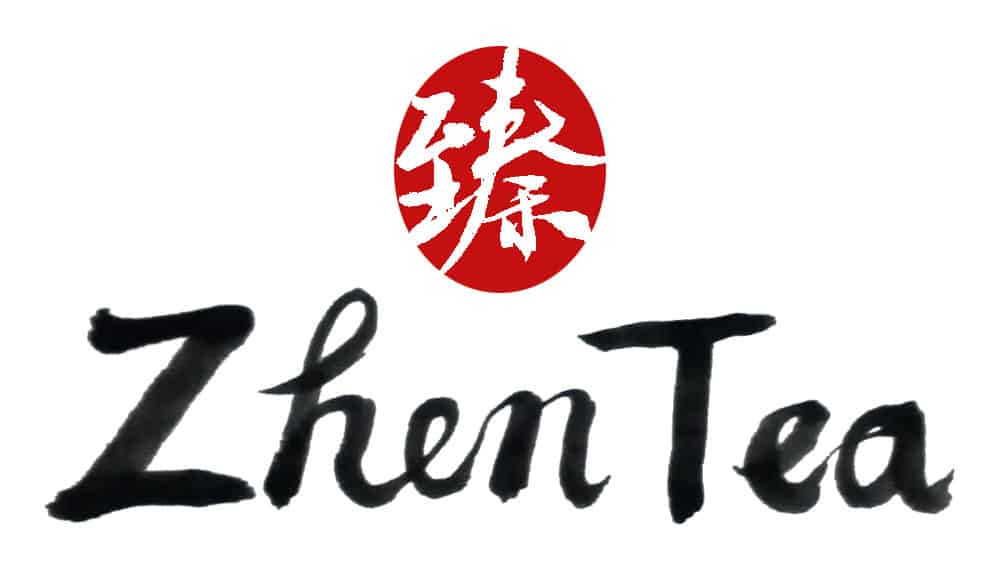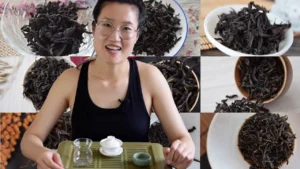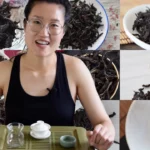You may have noticed that not all the tea you purchased comes with an expiry date. Does tea expire? How long can I keep my tea? How should I store my tea? Does tea go bad? What about aged tea? These are the questions we are going to answer in this video. As usual, we share our guidelines and thoughts on the topic, but don’t hesitate to leave a comment below with your thoughts, or the things you’ve heard from other people. We’re not laying down the law here, and I think sharing different voices can help fellow tea lovers see what’s out there, weigh the pros and cons and choose the best approach for themselves.
When we get groceries like tomatoes or cucumbers, there’s no expiry date but they do go bad. If we put them in a hot, humid environment, they might go bad in a couple of days, in a fridge, they might last 2 weeks, if we make them into sun dried tomatoes or can them, that’s another different life span again. Tea is similar to produce, but with some interesting twists. To make it easier to explain this topic, we’ll categorize tea’s life into 3 separate phases, not quite as amazing as the 6 categories, but it will work to help us understand tea storage better!
First, the shortest life of tea is once it’s brewed. When the tea is brewed but not yet done, you may wonder, can I save the leaves and keep brew them later? This mostly happens in gongfu style when we do multiple infusions. And… of course, you can! Actually, Zhen and I do this all the time. Especially, when it’s an oolong or a Sheng Pu’er that could go for a long time and we’re just taking a short tea break in the middle of our workday. Both the brewed leaves and the liquor can be preserved and enjoyed throughout the day. And, if you want to save them for tomorrow, it’s also fine, unless it’s really hot and humid, then you should probably tuck them in the fridge. Of course, this is not the suggested way to enjoy tea, because it does reduce the aroma and change the taste. It’s more noticeable with white, green, yellow and light oolongs, while impact on the taste on the “darker” teas, like roasted oolongs, black and dark tea, is much slower. So don’t hesitate to treat yourself to that robust tea that lasts for so many infusions on your tea break! You can come back to it over and over throughout the day until it’s finished!
Now let’s talk about the life of dry tea leaves, the leaves we purchase from stores. The end of these leaves is when they are no longer drinkable, for example, if they get moldy. But tea can last for quite a while if we store it properly. The biggest enemies of tea are direct sunlight, too much humidity or moisture, and odour. So be sure to store your tea in a well sealed, opaque container. Green, yellow and green oolong tea are better stored in a fridge for maximum freshness, other teas are fine at room temperature. Though it’s hard, if not impossible to set an exact expiry date on tea, we usually recommend about 3 years as a rough guideline for the shelf life assuming the tea is made with basic quality standards. There is also a prime time to enjoy your tea. For example, it’s better to drink green, yellow and green oolong teas as soon as possible, of course there’s no rush to finish these teas in weeks or even a couple months, but it’s definitely not recommended to take years to get through them. Many oolong teas and black teas taste better after a year or so, and stay at their peak flavor for another year or two. However, these timelines only apply to teas made with the proper, conventional process. Tea is a very lively industry where process changes happen all the time. I don’t want to call it evolution, or innovation as these words usually imply positive changes. Yes, not all change that makes it onto the shelves is for the better. There are many process changes simply aiming at improving the speed of output, either by eliminating steps or modifying the most technical and complicated steps. Yancha, rock tea for example. If you bought a current year yancha in July or August, don’t hesitate, drink it now. Or if your new yancha has an aroma that is so floral and booming, don’t wait, drink it while it’s still good. The taste of this kind of yancha won’t peak later, it will only decline. I just want to emphasize that the traditional guidelines for storage are for high quality, properly made teas, and don’t apply to all teas in today’s market. One of the questions we hear a lot is “why does my tea go bad so quickly”? This is actually two different questions that are simplified as “going bad”. One is the obvious “going bad”, that is, the tea actually gets moldy and cannot be drunk. But a very confusing thing happens to some tea lovers. They seal their tea well, and they don’t live in a very humid environment, but they find out after a few weeks or months that their tea is moldy! This often makes them feel that the seal wasn’t good enough, the humid air touched the tea. But to be honest, whether you live in Montreal, or New York, the humid weather that we chat about is really not that humid for tea at all, and is unlikely to be in the zone that would cause your tea to go moldy. The real reason is that there’s too much moisture in the tea leaves themselves, and it is well sealed. If it hadn’t been sealed so well, it probably wouldn’t have gone moldy or at least won’t have gone moldy so fast. What this really reflects is that the tea was not made to a basic quality standard. Tea ensures its long shelf life by reducing the water in the tea leaves to a proper amount, and of course tea has natural antibacterial properties making it less susceptible to mold. China has a very clear standard for the water ratio in the ready-to-sell tea according to the tea’s type and in some cases even for specific teas. When the tea is too wet like this, it is either to purposely make the tea heavier for sale, or it’s an unintentional accident and the tea producer can’t meet the basic standard of tea making and the tea merchant was not able to identify the issue when sourcing it, a very unpleasant experience for the consumer. Another kind of “tea going bad” is a “better” scenario because the tea is still drinkable, but it’s just not as good, or aromatic as before. If it happens after quite a while, it’s normal. But if it’s just a couple of months and tea tastes significantly duller, it’s another indicator of a quality issue. The yancha I mentioned earlier, those ones will often have this issue, that’s why it’s better to drink it up right away. However, there’s a way to help in this case, which is roasting, Using gentle heat to reactivate the flavour and the aroma of the tea. You don’t have to purchase something special for doing it, an essential oil burner would work, or even put in a pan on the stove on low heat for a bit, but you really have to watch the heat level closely if you go with a stove.
If you call yourself a tea head, you must know of the ultra long life of tea – aging! Some teas will improve with age, Pu’er for example. White tea and oolong tea are also popular choices when it comes to aging. One of the most talked about topics on aging is whether to use a tea humidor for tea storage or not. A humidor ensures that the tea is stored in an environment of controlled and consistent temperature and/or humidity. The concept is inherited from cigars and wine. When introducing people to tea tasting, wine, cigars and whisky are often used as comparisons because they have many similarities when it comes to the art of tasting, and by relating them it’s easier for people to accept the concept of tea tasting. However, tea is not a cigar nor a wine, so when it comes to aging, can tea still follow wine’s aging traditions and practices? Well, first, let’s just quickly review why wine or cigar requires consistent humidity and temperature. A proper temperature is more key to wine storage as it can speed up or slow down the maturity of wine and ultimately affect the quality of wine. Humidity is of indirect importance as it could affect the cork and compromise the seal, which could result in ruining the wine. Looking at cigars, which are more concerned about humidity, if it’s too low, the tobacco will turn into kindling, losing essential oils and flavours. Too humid, the tobacco might go moldy. Temperature plays a secondary role in this case because it affects relative humidity. I don’t know much about wine or cigars, so if what I said wasn’t right, please don’t hesitate to correct me by commenting below. But, now let’s turn back to tea. The changes that occur when aging tea happen in many ways, enzymatic or oxidation , anaerobic or aerobic. Take pu’er for example, since it’s the tea that started the trend of purposely and commercially aging tea. The wrap or package is paper or bamboo so it’s not sealed, having some contact with air is an important factor for aging. Water is essential for many chemical and microbial reactions in tea’s aging. So humidity is also very important, too high, and yes, the tea will also get moldy. When it’s too low, it will significantly slow down the aging process of the tea, but unlike cigars, low humidity won’t damage the tea. As for temperature, as long as you don’t cook or freeze the tea and it’s around room temperature you won’t destroy your tea, it’s just a matter of aging speed. All this blah blah is just to address 2 main points, first, temperature and humidity are both key players in tea’s aging; second, consistency is not as important for tea as it is for cigars or wine because the nature of tea makes it more resistant to environmental fluctuations. So a humidor is always a safe play for those who love aging tea. It’s a worry free, set and forget way to age tea. For industrial level tea companies who purchased a huge amount of tea for aging, it’s a great way to guard your investment, low risk. Many have suggested that the relative humidity should be lower than 75%, and the temperature should be below 45ºC as a general guide. What’s the best combination, the right speed of aging? Is 25ºC/70% better, or is 35ºC/50% better? Well, that’s a question you have to answer for yourself. However, every coin has two sides. The safe play also means a rather predictable taste. But the delightful and surprising tasting elements from aging are what greatly improve the value as well as the tasting experience of the tea. For example, one of our previous supreme teas, which is sold out now, is a Lao Cha Tou from the 1980s that features distinctive peppery, floral notes. This is very rare in Pu’er, making it a one of a kind, exceptional tea. All the pinnacle antique Pu’er are naturally aged too. The beauty of aging tea in a natural environment is correctly considered risky but mistakenly assumed to be undesired – the temperature and humidity swing that happens naturally are actually quite interesting. What happens is that the tea goes through cycles with nature. In the summer, it’s hot and humid encouraging enzymatic and microbial activities in the leaves. The tea goes into a fast phase of aging. When winter comes, the low temperature slows the transformation down while the lower humidity in the air also sucks out some moisture from the tea. So if the tea has been aging fast in a high temp and high humidity environment, this is the time it relaxes and prevents it from crossing the line to becoming moldy. It acts like a natural protection plan, in case the tea absorbs too much moisture in the summer, this gives it time to “dry out”. And don’t worry, aging is still happening slowly, it’s not totally stopped, as long as it’s not frozen. In some regions, this weather swing is not as obvious as a region with four seasons, but there are still some weather differences throughout the year. The downside of this way of aging is that you do need to keep an eye on the tea. Not necessarily very often, but if for example, you are having an extreme summer of 40ºC/90% for weeks on end, you might want to check on the tea, or put up a dehumidifier, for the tea and yourself too. But most North American homes are temperature regulated, so it’s really not much of a concern. In the end, to age tea in a humidor or not, is really a question of personal preference. So be sure to share with us and our fellow tea lovers how you age your tea. I know some of you have really awesome, creative ways doing it.
After hearing all this, there will be questions like “how do I know what tea is good for aging and how can I tell if my tea has too much moisture in it”? These are variations on the most asked question we receive “how do I know the quality of a tea?” They don’t have a quick and easy answer. It requires solid knowledge, extensive experience and a strong ability to connect the taste of tea to its quality and information. The best way would be to choose a trusted vendor, like what we always do for many other domains of our life. Or an organic approach is simply do it. Forget about whether this tea is worth aging or not, just age it if you want. Sample it as time passes and if it turns out the taste goes downwards, then you’ll know that this tea wasn’t the right tea to age. On the other hand, you might find a pleasant surprise. I mean, why not?









